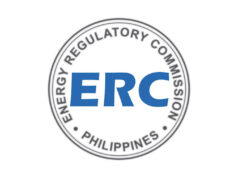THE HOUSE special committee on flagship programs and projects approved Monday a bill granting special powers to President Rodrigo R. Duterte to speed up the implementation of his “Build, Build, Build” infrastructure program.
“Tulad po ng nag-declare tayo ng special powers para po harapin ang Taal, isang disaster, bakit hindi natin gamitin ang powers para sa isang opportunity? (We granted special powers to deal with the Taal eruption; why shouldn’t we grant powers to take advantage of an opportunity?)” Representative Jose Maria Clemente S. Salceda of Albay, the bill’s author, said on the sidelines of a House hearing.
House Bill 5456 or the proposed Flagship Emergency Act was approved subject to style revisions and amendments.
The amendments approved by the committee are as follows: changing “emergency powers” to “special powers” and allowing the next President to have the same power to fast-track infrastructure projects, among others.
The bill also authorizes “special modes of procurement” and boosts the government’s eminent domain powers to address right-of-way bottlenecks in infrastructure projects.
According to Mr. Salceda, the Philippines needs to fast-track its infrastructure projects to “fill the gap” in external demand with the Covid-19 outbreak threatening to stifle economic activity.
“Lalong-lalo sa panahon na may (Covid-19) kung saan ang buong mundo po ay dumadaan po sa isang posibleng problema sa pagbagal ng ekonomiya, eh mas kinakailangan po na bilisan natin ang mga proyekto dito sa loob ng ating bansa para po mas matapatan o mapunuan po natin yung kakulangan po sa external demand (We need to compensate for weaker external demand by facilitating these projects at a time when the epidemic threatens to slow down economies all over the world),” he said.
He said the economy has the potential to grow by 10-12% if the infrastructure bottlenecks are addressed, Mr. Salceda said.
“Kung ang ating imprastraktura na sa ngayon ay nasa 5.2% of GDP, ang ganung klase pong infrastructure ay pwede po magpabilis ng ekonomiya between 10 to 12% (With infrastructure spending accounting for 5.2% of GDP, removing the constraints on infrastructure could bring growth to 10-12%),” he said. — Genshen L. Espedido



